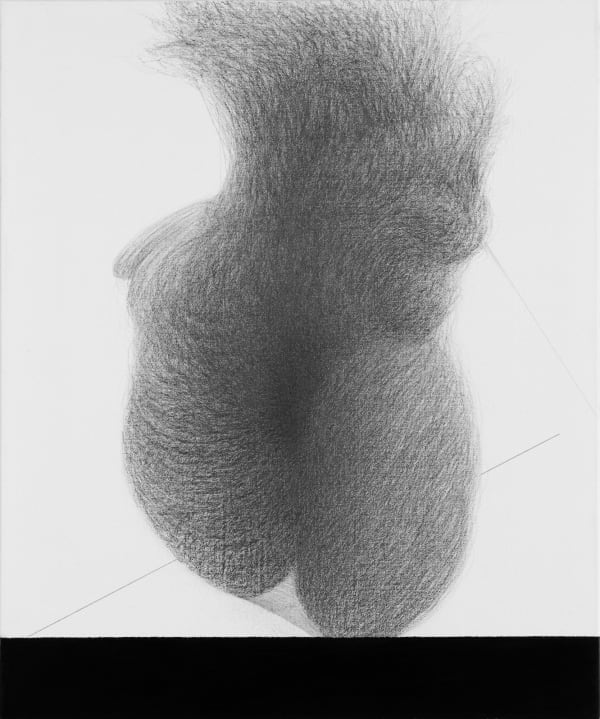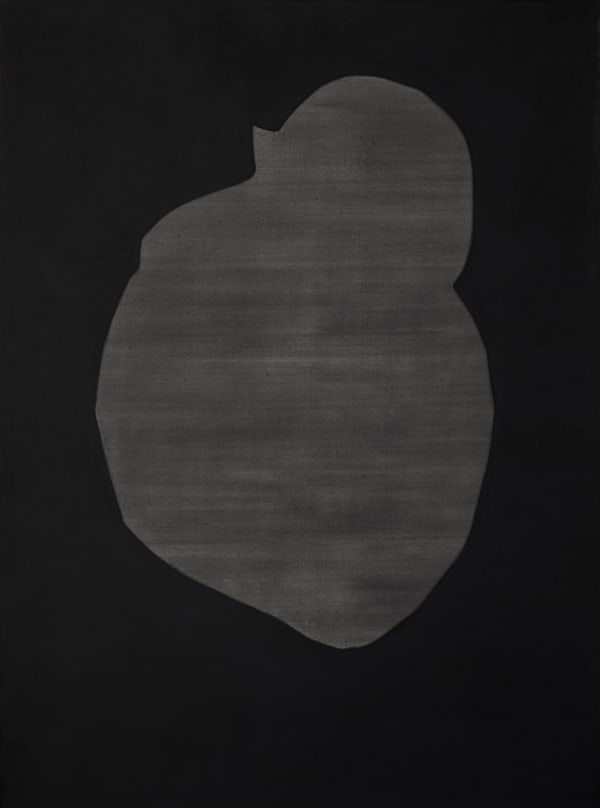Yang Jung Hwa: Black Pool
CHAPTER II 2021. 2. 18 - 3. 27
CHAPTER II YARD 2021. 4. 15 - 5. 22
Chapter II is delighted to present, Black Pool, a solo exhibition of Yang Jung Hwa from 18th February to 27th March in Yeonnam-dong, Seoul. In this exhibition, Yang Jung Hwa who has been preoccupied with drawings on canvases by employing achromatic-color materials such as charcoal and conté reveals new series she came up with and produced during the period in which a fictional dystopia has been seemingly simulated due to the global pandemic.
In the world created by Yang Jung Hwa, the black color holds a unique and unparalleled position. It is regarded as a color in terms of a linguistic perspective however, strictly black is not included in the spectrum of light. Thus, the presence of black only encroaches on other different hues without being affected by them and this suggests the physical and phenomenological ground for the lexical origin of ‘Black Hole.’ In the case of black and white photographic film, the term, ‘Gradation’, refers to the degree of saturation—how much black is infiltrated by white. According to the proportion of the two achromatic colors, the middle area of shades, often called greyscale, appears between both extremes. In this context, grey is a structural coexistence of black and white, color and non-color and light and its absence; it consequently plays a significant role which presents a sense of dimension and mobility conveyed in images of Yang Jung Hwa’s practice.
Friction with the surface of a canvas allows the pigments of charcoal and black conté to tightly adhere onto the plane. Contrary to typical liquid materials including paints, they respond to physical manipulation without deformation of their inherent property. By rubbing, which can be a form of meditative practice, the artist manages to translocate the positions of each particle. Since canvases generally have white surfaces, the expression of colors—the selected gradation—unfolds depending on Yang’s intention which decides where to repeatedly leave the pigments on. The act of covering light through the constant movement can be seen as a process of extracting images she wants to establish and the images produced by the artist’s aesthetic motive finally have an impact on the cognitive domains of spectators.
The title of the exhibition, Black Pool, is related to the physical function of ‘heart’—the major subject of Yang’s new series of works. Through a repetitive movement over the entire life span, the heart, a muscular organ providing oxygen and nutrition contained in the blood to every sector of a body, is closely associated with the beginning and closure of life. Being connected to central nerves, the heart instantly responds to emotional changes by increasing and decreasing its cardiac rate. Yang discovers a similarity in the mechanism and applies it to her works as her fundamental source of creation stems from her memories which are considerably influenced by circumstances and ambience of particular moments.
The shapes of hearts in a variety of structures and patterns crossing over figurative and abstract realms without any restriction demonstrate variations of visual effects and dynamics achieved by contrasts of rhythm and non-rhythm, consonance and dissonance, and curves and faces within a limited frame. Especially, adopting disparate traits of diverse materials leads to an entanglement of fine pigments which ultimately enables the surface to gain an authentic sense of texture; therefore, the monochrome images eventually can avoid a certain banal tone and maintain an intriguing tension.
Yang Jung Hwa (b.1973) completed her BA in Printing and PhD in Art Studies at the Hongik University and also a course in Lithography at SUNY in New Paltz, Art Studio Department. Her practice has been featured in solo exhibitions at Place Mak Yeonhui(2019) and Kwanhoon Gallery(2008, 2001). She has participated in multiple group exhibitions at Chapter II(2019), Seoul Museum of Art(2011), SOMA Drawing Center(2016) and MMCA Residency Goyang(2010) and several international expositions including Russia Novosibirsk International Graphic Biennial(2009) and Tokyo International Printmaking Triennial(2002). She is currently exploring multidisciplinary approaches including painting, sculpture and installation in order to consistently expand her artistic boundary.
-
 Yang Jung Hwa, Untitled, 2021
Yang Jung Hwa, Untitled, 2021 -
 Yang Jung Hwa, Untitled, 2021
Yang Jung Hwa, Untitled, 2021 -
 Yang Jung Hwa, Untitled, 2021
Yang Jung Hwa, Untitled, 2021 -
 Yang Jung Hwa, Untitled Figure, 2017
Yang Jung Hwa, Untitled Figure, 2017 -
 Yang Jung Hwa, Untitled Floating, 2021
Yang Jung Hwa, Untitled Floating, 2021 -
 Yang Jung Hwa, Untitled Metamorphosis, 2021
Yang Jung Hwa, Untitled Metamorphosis, 2021 -
 Yang Jung Hwa, Untitled Metamorphosis, 2021
Yang Jung Hwa, Untitled Metamorphosis, 2021 -
 Yang Jung Hwa, Untitled Metamorphosis, 2021
Yang Jung Hwa, Untitled Metamorphosis, 2021 -
 Yang Jung Hwa, Untitled Metamorphosis, 2021
Yang Jung Hwa, Untitled Metamorphosis, 2021 -
 Yang Jung Hwa, Untitled Metamorphosis, 2021
Yang Jung Hwa, Untitled Metamorphosis, 2021 -
 Yang Jung Hwa, Untitled Metamorphosis, 2021
Yang Jung Hwa, Untitled Metamorphosis, 2021 -
 Yang Jung Hwa, Untitled Pure, 2019
Yang Jung Hwa, Untitled Pure, 2019














